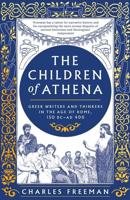Publisher's Synopsis
Excerpt from Easy Lessons in Egyptian Hieroglyphics With Sign List
This little book is intended to form an easy intro duction to the study of the Egyptian hieroglyphic in scriptions, and has been prepared In answer to many requests made both in Egypt and m England. It con tains a short account of the decipherment of Egyptian �hieroglyphics, and a sketch of the hieroglyphic system 'of writing and of the general principles which underlie the use of picture signs to express thought. The main facts of Egyptian grammar are given in a series of short chapters, and these are illustrated by numerous brief extracts from hieroglyphic texts each extract is printed in hieroglyphic type and is accompanied by a transliteration and translation. Following the exam ple of the early Egyptologists it has been thought better to multiply extracts from texts rather than to heap up a large number of grammatical details Without supplying the beginner with the means of examining their application. In the limits of the following pages it would be impossible to treat Egyptian grammar at any length, while the discussion of details would be quite out of place. The chief object has been to make the beginner familiar with' the most common signs and words, so that he may, whilst puzzling out the ex tracts from texts quoted in illustration of grammatical facts, be able to attack the longer connected texts given in my First Steps in Egyptian and in my Egyptian Reading Book.
About the Publisher
Forgotten Books publishes hundreds of thousands of rare and classic books. Find more at www.forgottenbooks.com
This book is a reproduction of an important historical work. Forgotten Books uses state-of-the-art technology to digitally reconstruct the work, preserving the original format whilst repairing imperfections present in the aged copy. In rare cases, an imperfection in the original, such as a blemish or missing page, may be replicated in our edition. We do, however, repair the vast majority of imperfections successfully; any imperfections that remain are intentionally left to preserve the state of such historical works.










